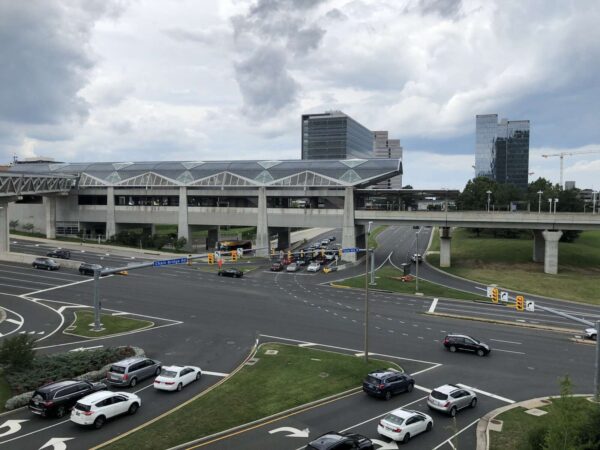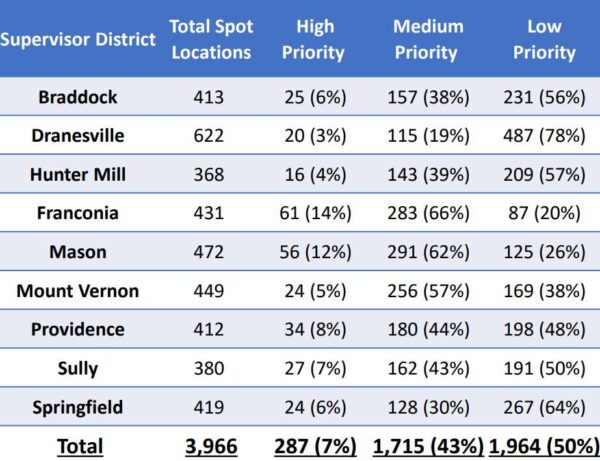
Local officials are in the midst of developing a data-driven way to prioritize and implement spot transportation improvements throughout Fairfax County.
The spot improvement screening program, which was discussed at a Fairfax County Board of Supervisors’ transportation committee meeting on July 18, lets the county identify priority locations for new transportation improvements, especially along intersections.
The program also intends to prioritize safety as a metric to evaluate transportation.
So far, the county has identified 287 projects as high priority out of a total of 3,966 reviewed locations. Roughly 46% of the spots already have a planned project nearby, according to the county.
The Dranesville District had the most spots, but the majority of them were categorized as “low priority.” The Franconia and Mason districts led the way in terms of high-priority spots.

Underway since 2021, the county’s methodology prioritizes safety while also considering equity and the multimodal nature of the area, Fairfax County Department of Transportation staff said.
The county is in the midst of finalizing locations for each district. Evaluation and implementation is contingent on approval by the Board of Supervisors.
FCDOT staff recommend focusing on high priority locations and working with the Virginia Department of Transportation to strategize funding for projects. Staff also suggested further narrowing spots where there are no programmed safety-related projects.
If approved, the spot improvement program could get renewed every three to five years.
While the full list of possible spot improvements was not released at the meeting, Vanessa Holt from FCDOT’s traffic engineering section said that public input will be solicited on projects.
“Our program recommendations include focusing on the high priority spot locations,” Holt said.
At the meeting, supervisors asked staff to consider other elements in their evaluations. Hunter Mill District Supervisor Walter Alcorn suggested incorporating near-misses, camera data from VDOT, and other data points into the prioritization process.
“I really like the process, the drivers being data-driven,” Alcorn said.
The program, which is not yet funded, is different from the county’s active transportation program, which sets aside $100 million for improvements for pedestrians, bicyclists and other non-motorized travelers.
Board Chairman Jeff McKay also emphasized that not all traffic fatalities are linked to road safety issues.
“Unfortunately, we do have fatalities in some corridors of the county. It’s not a road design issue at all,” McKay said.
He also added that the proximity of other projects to prioritized spot improvement locations shouldn’t automatically downgrade a project from the list. Instead, the location may be a strategic area to kill two birds with the same stone.
Others like Springfield District Supervisor Pat Herrity noted that funding for these projects may not be available for several years, resulting in the need to manage public expectations about implementation.
Holt acknowledged that the public’s feedback is critical as the process moves forward.
“We recognize that data analysis is not perfect when we have that human element in transportation safety,” Holt said.

